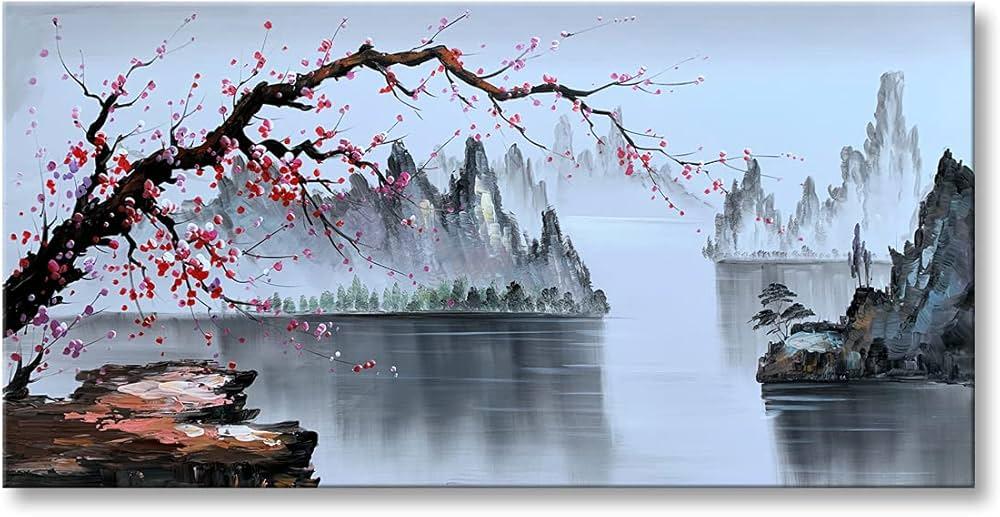Chinese arts stand as a testament to centuries of cultural refinement, embodying history, philosophy, and aesthetics. From ancient calligraphy to contemporary paintings, Chinese arts have undergone transformations while staying true to their origins. The interplay between tradition and modernity is evident in various artistic expressions, making this field a rich tapestry of cultural continuity and innovation.
A Legacy of Tradition
The origins of Chinese arts trace back thousands of years, with early evidence found in Neolithic pottery and jade carvings. Art in China has always been deeply connected to philosophy, literature, and social customs. Confucianism, Taoism, and Buddhism significantly influenced artistic expression, shaping the themes and styles that defined different dynasties.
Calligraphy, one of the most revered forms of Chinese arts, embodies the philosophical essence of balance, discipline, and harmony. Ink painting, closely related to calligraphy, reflects nature's beauty through delicate brushwork and an emphasis on empty space, an element that signifies more than what is depicted.
The Influence of Dynastic Periods
Each Chinese dynasty contributed to the evolution of Chinese arts. The Tang Dynasty saw a golden age of painting, poetry, and sculpture, while the Song Dynasty refined landscape painting, emphasizing simplicity and emotional depth. The Ming Dynasty brought innovations in ceramics and woodblock printing, expanding artistic accessibility.
During the Qing Dynasty, meticulous details became the hallmark of Chinese arts, evident in intricate silk paintings and imperial porcelain. The fusion of colors, patterns, and textures showcased artistic mastery that is still admired today.
The Shift Towards Modern Chinese Arts
While deeply rooted in tradition, Chinese arts began transforming significantly in the 20th century. With Western influences entering China, a new wave of artistic exploration emerged. Artists started experimenting with oil painting, modernist techniques, and abstract expressions, blending Chinese ink traditions with contemporary forms.
Despite these changes, many modern artists strive to preserve the essence of Chinese arts by incorporating traditional themes and techniques. The fusion of ink wash painting with digital mediums and experimental installations reflects how the past and present coexist within the artistic realm.
Symbolism in Chinese Arts
Symbolism plays a crucial role in Chinese arts, with many artworks carrying deep meanings. Dragons symbolize power and good fortune, while lotus flowers represent purity and enlightenment. Birds, mountains, rivers, and seasonal elements hold spiritual significance, reflecting the philosophical beliefs embedded in artistic expression.
Chinese landscapes often depict mountains shrouded in mist, symbolizing the pursuit of wisdom and transcendence. The careful placement of elements within compositions adheres to traditional aesthetics, ensuring a harmonious balance between nature and human existence.
The Global Appreciation of Chinese Arts
The influence of Chinese arts extends beyond China’s borders, with collectors, museums, and scholars worldwide recognizing its historical and cultural significance. Chinese calligraphy and painting techniques have inspired international artists, leading to cross-cultural exchanges that enrich global artistic landscapes.
Art auctions frequently feature traditional and contemporary Chinese arts, highlighting the continued demand for these masterpieces. The intricate craftsmanship of Chinese porcelain, silk paintings, and jade carvings remains highly valued in global art markets.
Chinese Arts in the Digital Age
The rise of technology has further transformed Chinese arts, with digital platforms providing artists new ways to showcase their work. Virtual exhibitions, digital ink paintings, and interactive installations merge tradition with modern advancements, allowing wider audiences to engage with these art forms.
Online communities dedicated to Chinese arts foster discussions, collaborations, and innovations, ensuring that traditional techniques remain relevant in the modern era. The integration of artificial intelligence, 3D modeling, and augmented reality continues to redefine artistic boundaries.
Preserving Chinese Arts for Future Generations
Efforts to preserve Chinese arts involve cultural education, museum curation, and artistic training programs. Institutions worldwide collaborate to document, restore, and exhibit historical artworks, ensuring that future generations appreciate and understand their significance.
Artists committed to keeping traditional Chinese arts alive actively teach younger generations, emphasizing the importance of craftsmanship, patience, and cultural heritage. These efforts help maintain artistic traditions while allowing room for contemporary interpretations.
Conclusion
The evolution of Chinese arts showcases a remarkable blend of heritage and innovation. While modern influences have reshaped artistic expressions, the essence of tradition remains intact. The timeless beauty of Chinese arts continues to inspire artists and art enthusiasts, ensuring its enduring legacy for generations to come.



